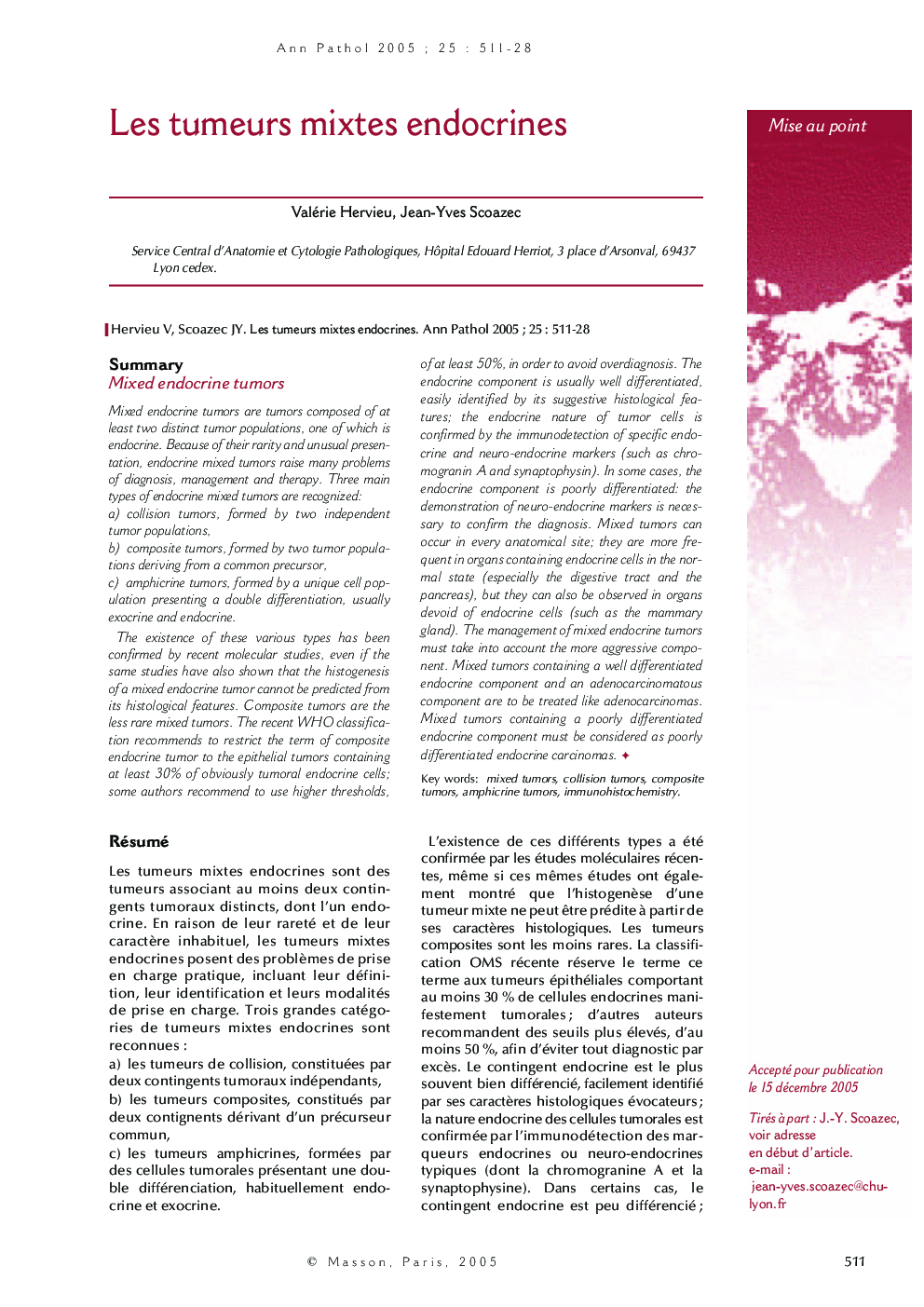| Article ID | Journal | Published Year | Pages | File Type |
|---|---|---|---|---|
| 9364743 | Annales de Pathologie | 2005 | 18 Pages |
Abstract
The existence of these various types has been confirmed by recent molecular studies, even if the same studies have also shown that the histogenesis of a mixed endocrine tumor cannot be predicted from its histological features. Composite tumors are the less rare mixed tumors. The recent WHO classification recommends to restrict the term of composite endocrine tumor to the epithelial tumors containing at least 30% of obviously tumoral endocrine cells; some authors recommend to use higher thresholds, of at least 50%, in order to avoid overdiagnosis. The endocrine component is usually well differentiated, easily identified by its suggestive histological features; the endocrine nature of tumor cells is confirmed by the immunodetection of specific endocrine and neuro-endocrine markers (such as chromogranin A and synaptophysin). In some cases, the endocrine component is poorly differentiated: the demonstration of neuro-endocrine markers is necessary to confirm the diagnosis. Mixed tumors can occur in every anatomical site; they are more frequent in organs containing endocrine cells in the normal state (especially the digestive tract and the pancreas), but they can also be observed in organs devoid of endocrine cells (such as the mammary gland). The management of mixed endocrine tumors must take into account the more aggressive component. Mixed tumors containing a well differentiated endocrine component and an adenocarcinomatous component are to be treated like adenocarcinomas. Mixed tumors containing a poorly differentiated endocrine component must be considered as poorly differentiated endocrine carcinomas.
Related Topics
Health Sciences
Medicine and Dentistry
Pathology and Medical Technology
Authors
Valérie Hervieu, Jean-Yves Scoazec,
